"wild coffee" is popular in Japan! How to make coffee by hand in the wild? Recommendation of outdoor coffee tools
Professional coffee knowledge exchange More coffee bean information Please pay attention to coffee workshop (Weixin Official Accounts cafe_style)
In recent years, there has been a craze for "wild coffee" in Japan's mountain regions-hand-brewed coffee in mountain camps with coffee equipment. How to prepare coffee by hand in the wild, when, where, and with what tools can you enjoy the most? Mr. Numata, a Japanese outdoor coffee enthusiast and designer of outdoor coffee tools, shared his experience!
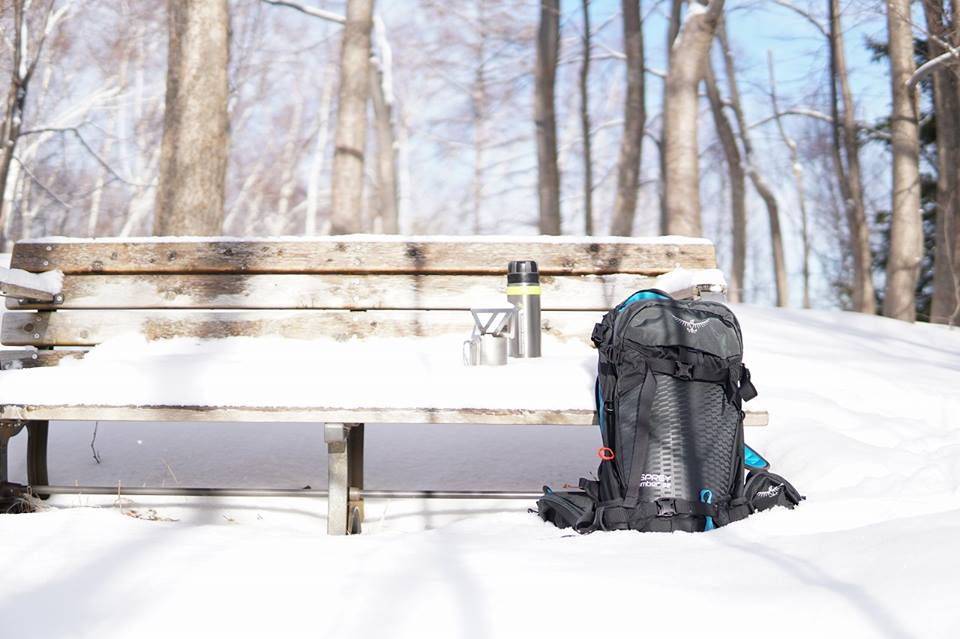
Mr. Numata's field kit.
NOKO NOMADA PROFILE
Outdoor coffee enthusiast living in Hokkaido, outdoor designer, mountain runner, mountain runner all over the world. The taste of coffee is very particular, and even has a business in the home with fried beans machine own fried beans. Whether it's hiking or camping, coffee makers are always with you, and you think you're happiest when you're making coffee with spectacular views.
In 2016, Mr. Numata felt that the existing wild coffee filter cup was too large, and the taste and stability were not as ideal, so he designed a coffee filter frame that was "light","stable" and "delicious coffee". He resigned from his job as a bicycle engineer and established his own brand MUNIEQ. He raised funds on a large crowdfunding platform to mass-produce Tetra Drip, a coffee filter frame made of three stainless steel metal sheets. It has sold 22,000 units worldwide. However, the research and development work around coffee filter frame is still continuous, and the works in the experiment include black stainless steel filter frame.
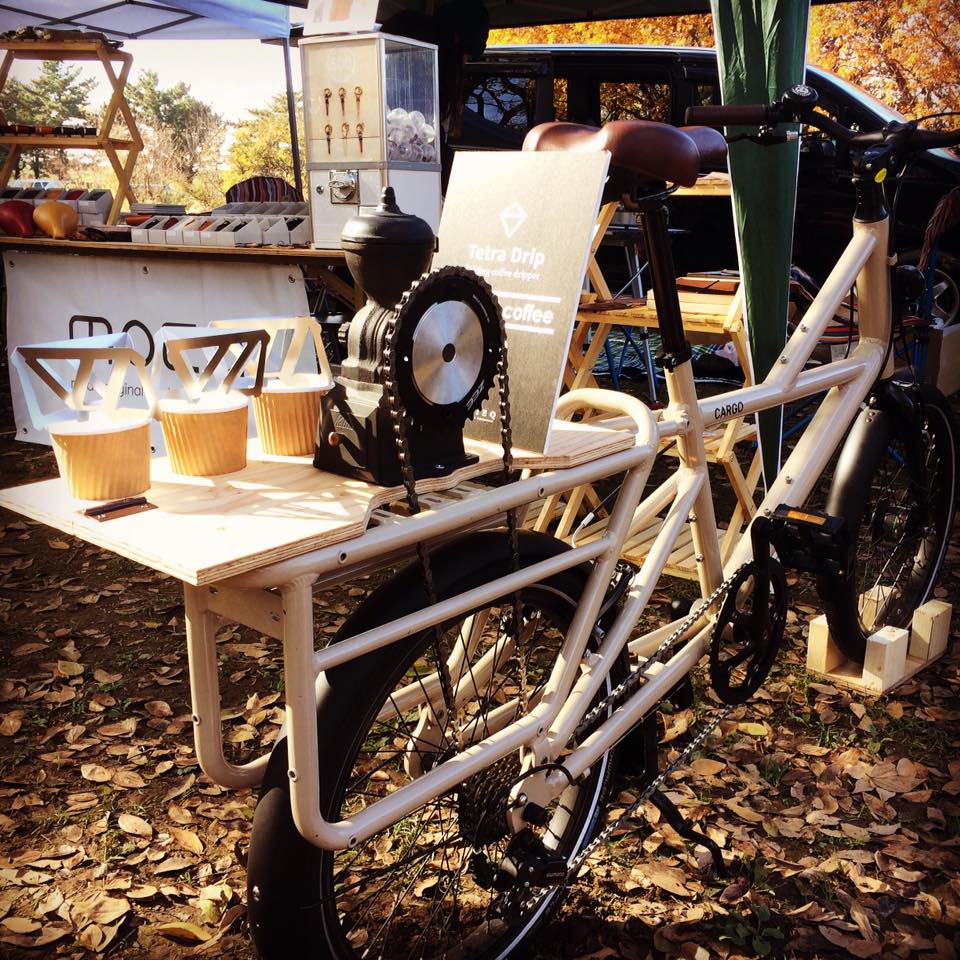
Mr. Numata's origin-bicycle, 2016 Bike coffee mill combined with Tetra Drip for outdoor handcraft event
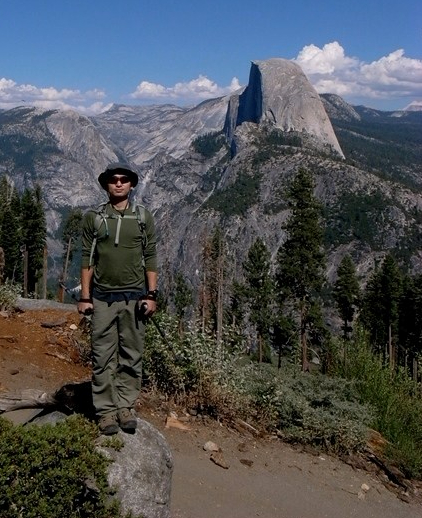
In Yosemite National Park
WHEN TIME
designing outdoor products is mr. numa's daily task, and coffee in the wild is his spiritual food for leisure.
"Fine morning, I will get up early to run the mountain, looking at the morning sun to make coffee. During lunch break, I will soak in the park near the studio; on the days when I don't have to work, I will see the sunset while making coffee. It feels very positive."
Snow is also a wonderful time to enjoy coffee in the wild.
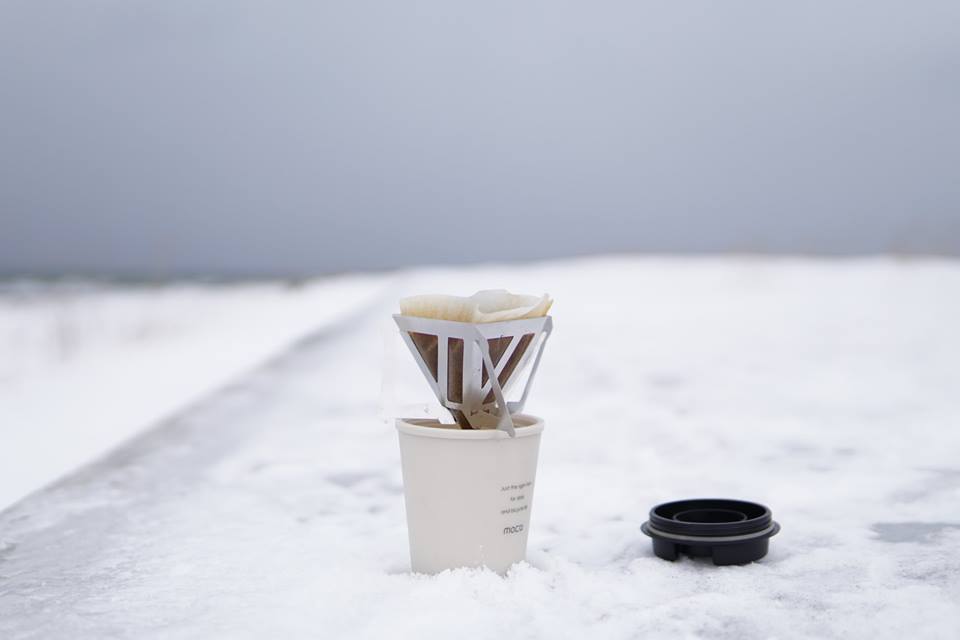
Numada-san's warm coffee hour after running in the snow
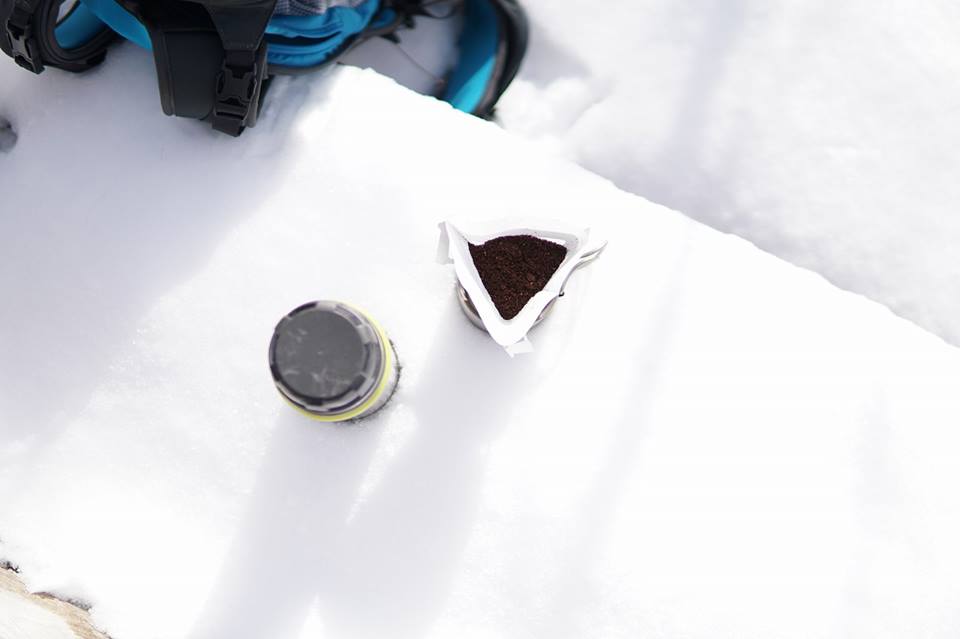
WHERE Location
Parks, mountains, and the sea are all good places to make coffee. Mr. Numata recommends the following three items for making coffee in the wild in Hokkaido.
SPOT 1: Shikotsu Lake Beauty Flute
"The tranquil campsite on the west bank of Lake Shikotsu, overlooking the sunset while enjoying coffee, feels speechless."
"In spring, you can see the new green of the lakeshore, blue sky in summer, and colorful red leaves in autumn. But the camp will be closed in winter."
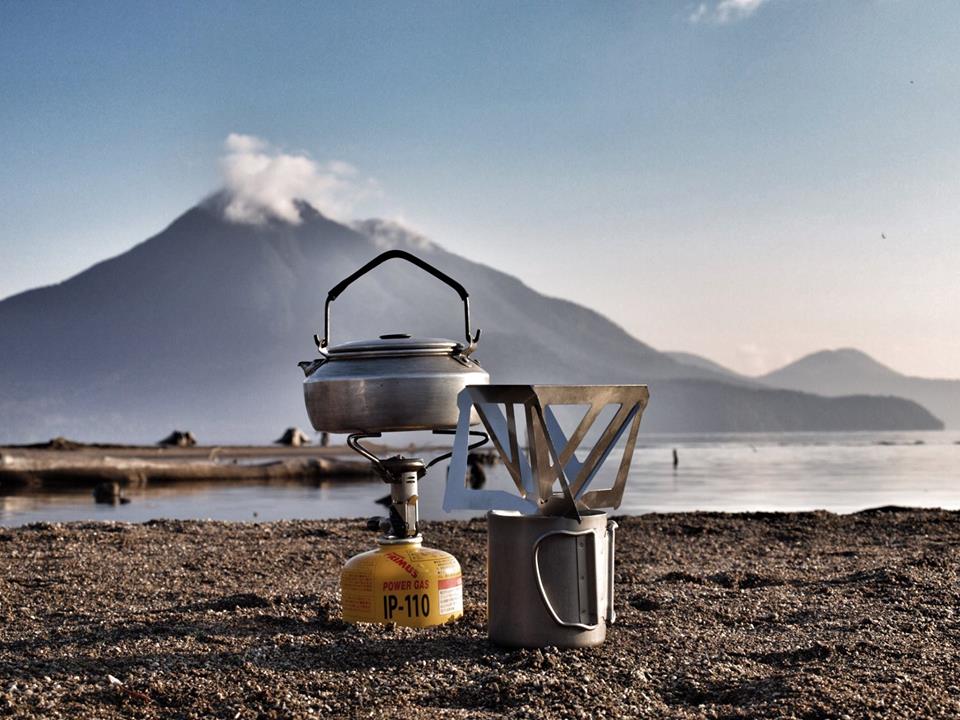
SPOT 2: Asahiyama Memorial Park
"Enjoy coffee while looking out at Sapporo. On a clear day, you can see the mountains in the distance. But be careful not to light a fire at the scene."
"In spring, the garden is full of cherry blossoms; in summer, the green of the mountains contrasts with the colors of the city; in autumn, there are also red leaves. In winter, when the air is clear, you can overlook the snow-covered mountains."
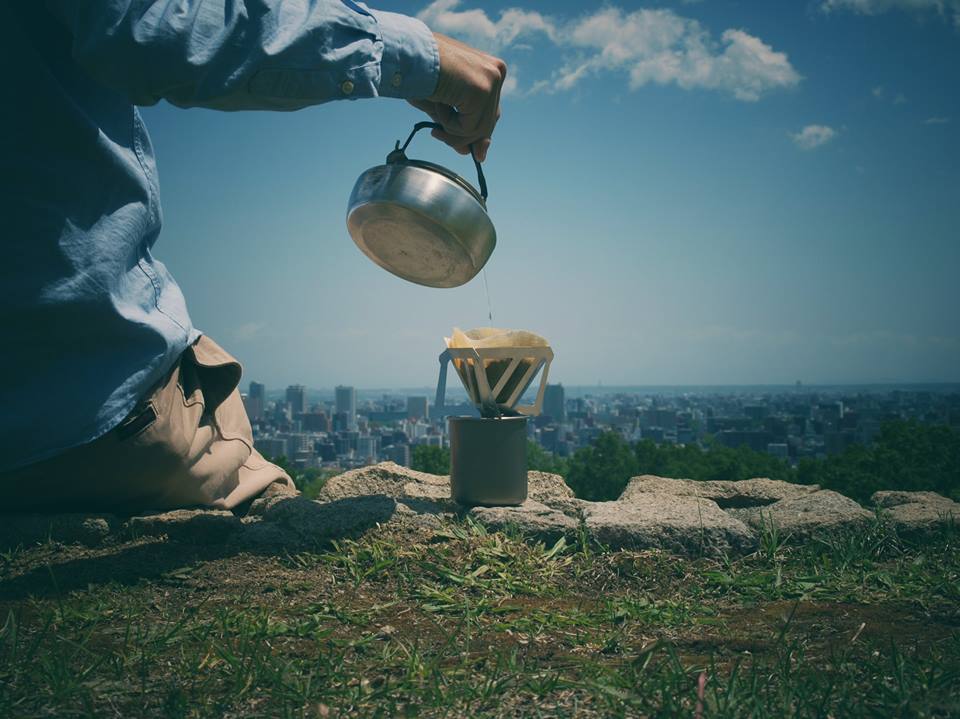
SPOT 3: Rain marsh wet plain
"One of Hokkaido's secret realms. In autumn, All the plants are dyed golden yellow. It is an hour's walk from the mountain entrance. The coffee shop you enjoy while looking out at the 360° view is different."
"In spring, there are snow and water plantain flowers; in summer, you can enjoy all kinds of alpine plants; in autumn, you can see golden withered fields. In winter, it is closed to the public."
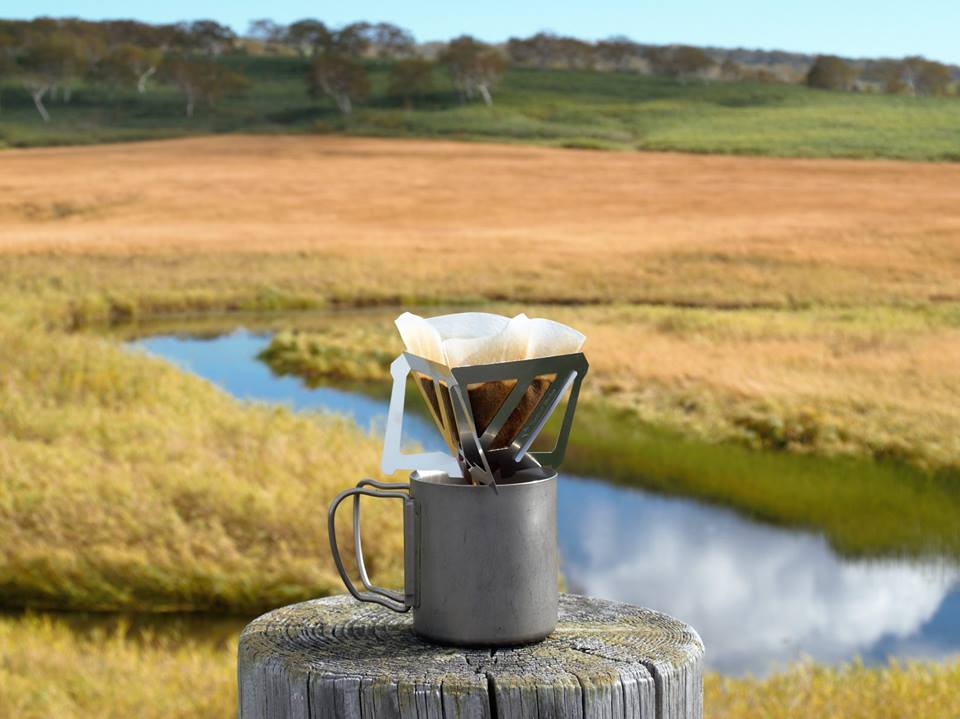
WHAT TOOLS. coffee beans
When it comes to making coffee in the wild, many coffee lovers are worried about having to put together a lot of equipment to move to the body, preferring to drink instant coffee.
Mr. Numata believes that among all the methods of coffee extraction, hand-drip coffee is the easiest one, requiring the simplest tools, suitable for field coffee, and can also choose to bring "professional" or "light" depending on the situation. The total weight of the ultra-lightweight package can even be controlled to only 641g!
1. Professional attire
boiler Stove rack, fuel
Outdoor kettle
Outdoor Coffee Filter (Numata uses Tetra Drip)
coffee filter
coffee grinder
coffee beans
cup
thermometer
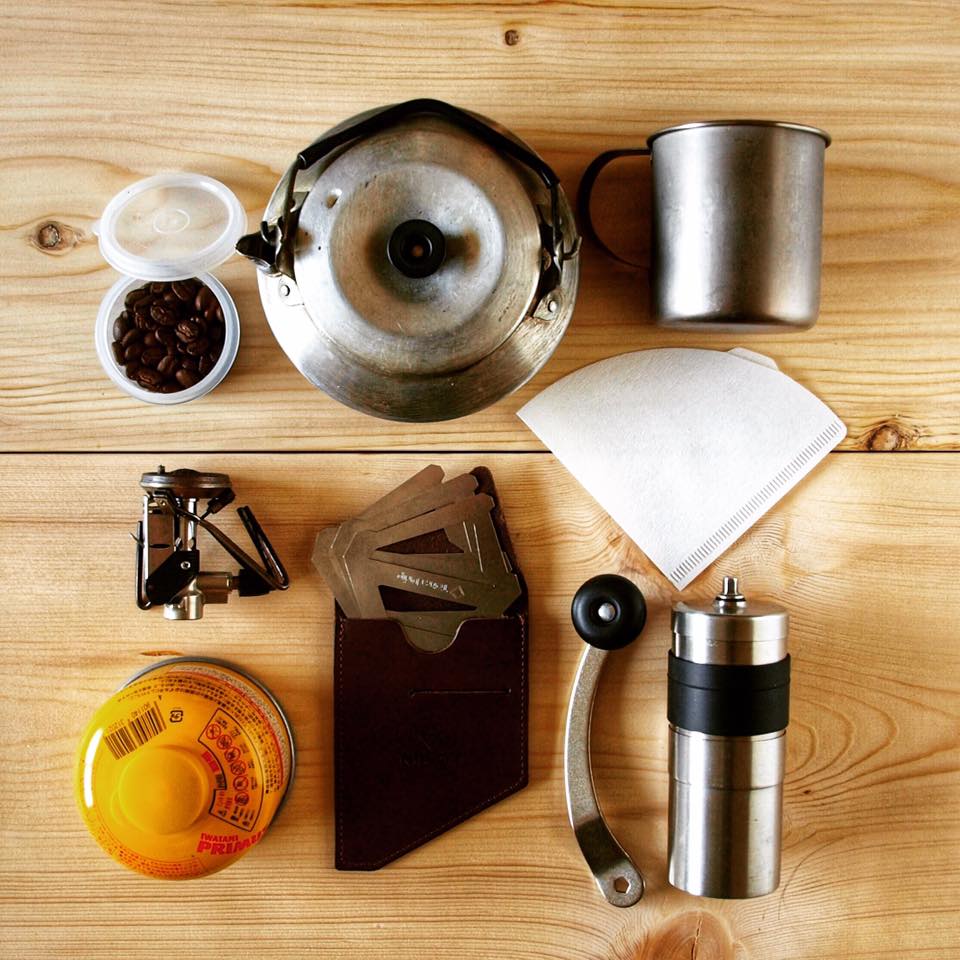
2. Lightweight/Ultra-Lightweight
Thermos flask (filled with boiling water)
Tetra Drip
filter paper
coffee grinder
Coffee beans (if you want to be lighter, you can grind coffee powder before departure, so you don't need to bring a coffee grinder)
cup
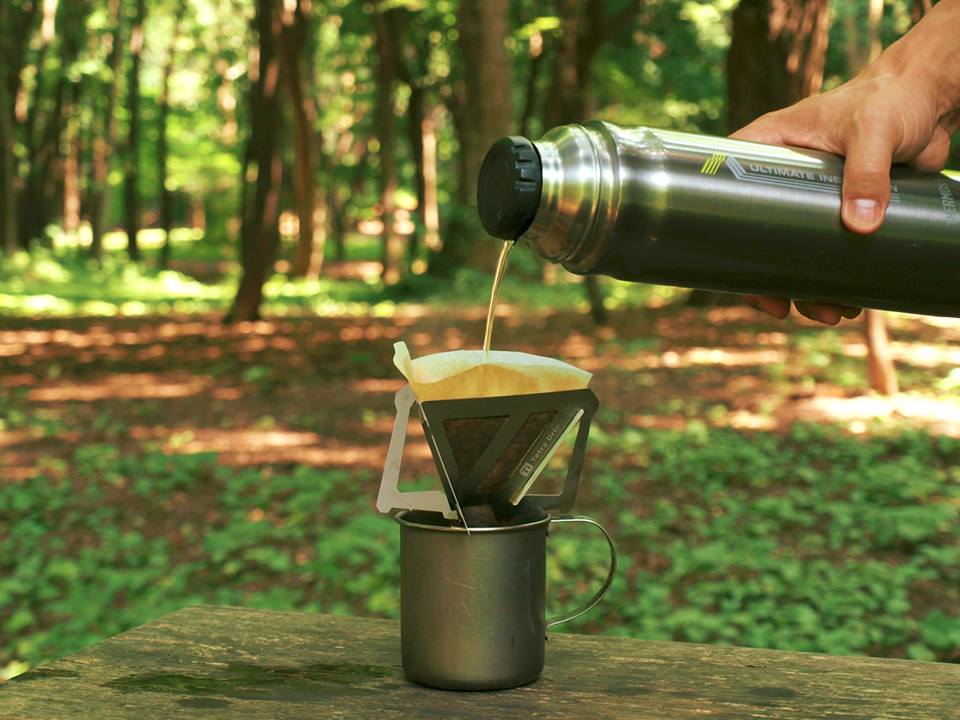
List of tools
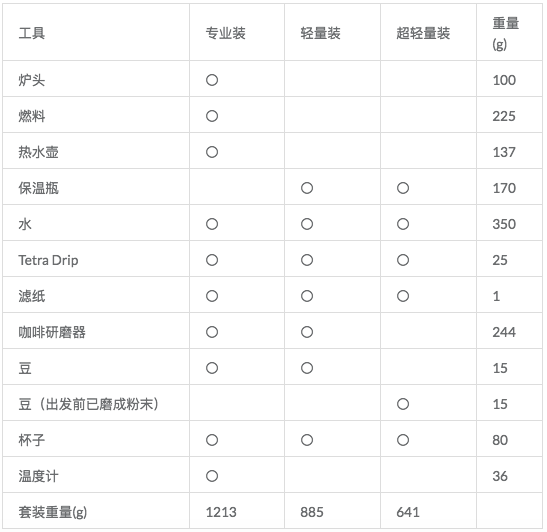
coffee beans
Roasting Degree--Shallow Deep Fried
Shallow fry can enjoy sour and sweet taste
Deep fry to enjoy the richness and bitterness of the beans
fresh baked
Coffee beans should be used fresh within 2 weeks of roasting, so that the aroma of coffee beans can be fully preserved.
Coarseness--fine grinding coarse grinding
Coffee beans should be ground into powder just before brewing. Coffee beans that have been ground into coffee powder lose their flavor quickly as the surface area increases. If coffee beans are ground at home, they should be stored in sealed containers to prevent contact with air.
Coffee is extracted quickly when ground
Coarse ground coffee extracts slowly
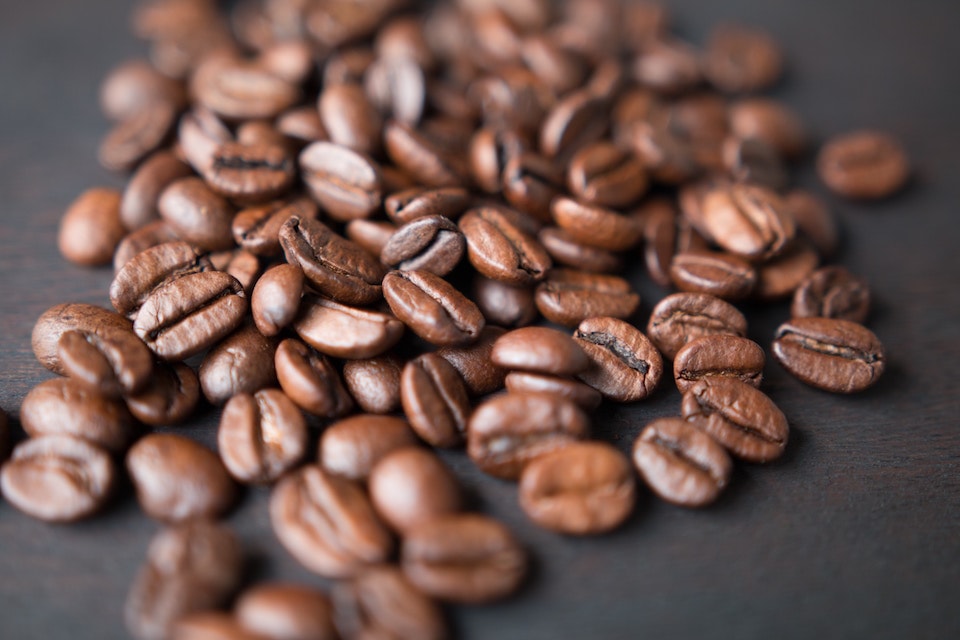
HOW Steps
STEP 1 Boil water
Just before the water boils, you can remove it from the heat by hearing the kettle make a sound. The water temperature is about 85-90 degrees.
POINT: In cold weather, the water temperature drops faster, so the hot water used to make coffee in the wild is slightly higher than the water temperature set by the above method.
STEP 2 Filter rack on cup Put in filter paper
If you use unbleached filter paper, you do not need to wet it with hot water first.
STEP 3 Pour in the ground coffee
POINT: The reason for the general failure of hand-brewed coffee is that the amount of coffee powder is too much, resulting in fresh coffee powder being full of diarrhea during steaming. So be careful with the amount of beans.
If a regular filter cup or filter holder is used, the amount of beans is about 4/5 level from the tip of the bottom of the filter paper to the top of the filter cup or filter holder.
With Tetra Drip, the upper limit for beans is 18g (1.5 cup filter holder) , while 3.5 cup filter holder is 40g.
STEP 4 Add hot water to brew coffee
The kettle should be placed in a lower position on the coffee filter rack and filled with water.
If hot water is injected from too high up, the surface of the coffee powder may splash. Especially in the wild coffee, when the wind blows, hot water will pour around.
First inject hot water into the center of the coffee and turn clockwise from inside to outside.
Add 25g and let stand for 30 seconds to allow the coffee to simmer and extract. Then inject hot water several times.
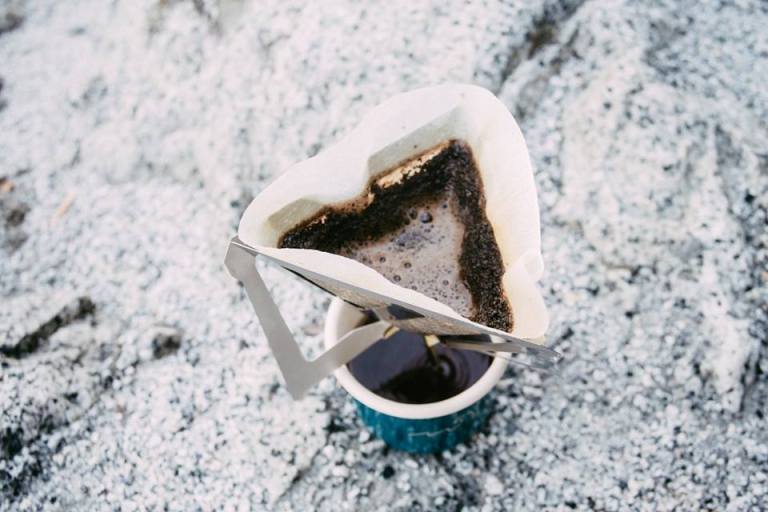
Hot water bottle thin mouth transformation method
making coffee by hand in the wild a kettle for boiling water and a hand-made kettle for brewing coffee are combined into one, and the luggage can be lightened.
Outdoor aluminum thermos, is a lot of camping enthusiasts heart good, ultra-light aluminum material plus small pot body for the wild coffee is very good. However, the mouth is always larger, for coffee novice, may not achieve the perfect effect of hand washing follicles. Mr. Numata, as a designer of outdoor coffee appliances, has his own unique "hot water bottle nozzle modification method"! Only need a small iron pliers, you can help the spout slim!
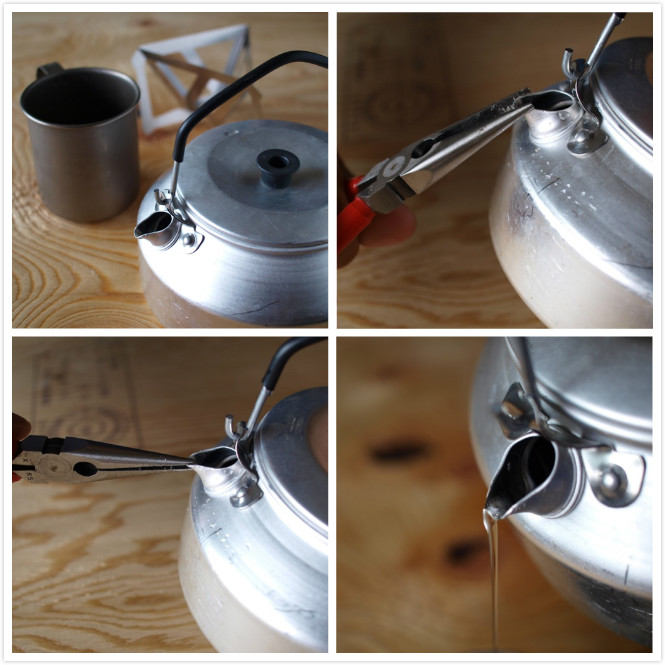
STEP 1
Use pliers to clamp the lower part of the spout until it narrows
STEP 2
Using pliers, bend the tip of the lower part of the mouth until it narrows.
* Depending on the material of the kettle, the effect may vary, please judge whether it is suitable for processing, so as not to burst the kettle spout.
After processing, the spout becomes thinner, allowing hot water to fall in a straight line to the coffee filter.
I like the wild, I like coffee, even my own coffee tools are designed and processed by myself, and then I drink it myself in the wild. This kind of wild coffee life is really cool--
Article source: and taste story
END
Important Notice :
前街咖啡 FrontStreet Coffee has moved to new addredd:
FrontStreet Coffee Address: 315,Donghua East Road,GuangZhou
Tel:020 38364473
- Prev
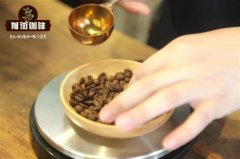
This paper briefly introduces the characteristic growing environment of Angolan coffee beans, Burundi coffee beans and Cameroon coffee beans.
Professional coffee knowledge exchange more coffee bean information Please follow Coffee Workshop (Wechat official account cafe_style) Angola was once a big coffee producer. In the mid-1970s, Angola (Angola) exported 3.5 million bags of coffee a year, 98% of which was Robex (which may be the best Robbins coffee in Africa). In 1990, total production dropped to 20%.
- Next
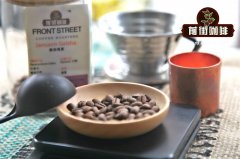
Yemeni Coffee rise and fall History of Yemeni Coffee Historical Development of Yemeni Coffee quality and Taste of Yemeni Moka
Professional coffee knowledge exchange more coffee bean information Please follow the coffee workshop (official Wechat account cafe_style) although the trend of boutique is the revival of "technology replacing machinery", the market is still inseparable from the supply and demand.
Related
- How did the Salvadoran coffee industry develop in Central America?
- What exactly does the golden cup extraction of coffee mean?
- The Origin of Coffee flower
- [2023 Starbucks World Earth Day] there are more meaningful things besides free Starbucks coffee!
- What kind of coffee is there in Spain? 9 Flavors of Spanish Coffee
- Aromatic African coffee| Kenya's coffee culture and historical production area
- Liberica Coffee Bean knowledge: the characteristics of Liberian Coffee beans of the three original species of Coffee beans
- The origin and formula of Spanish latte introduces the taste characteristics of Bombon coffee in Valencia, Spain.
- How to adjust the solution of over-extracted coffee
- What is the tasting period of coffee beans? What is the period of coffee and beans? How should coffee wake up and raise beans?

